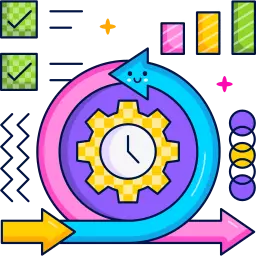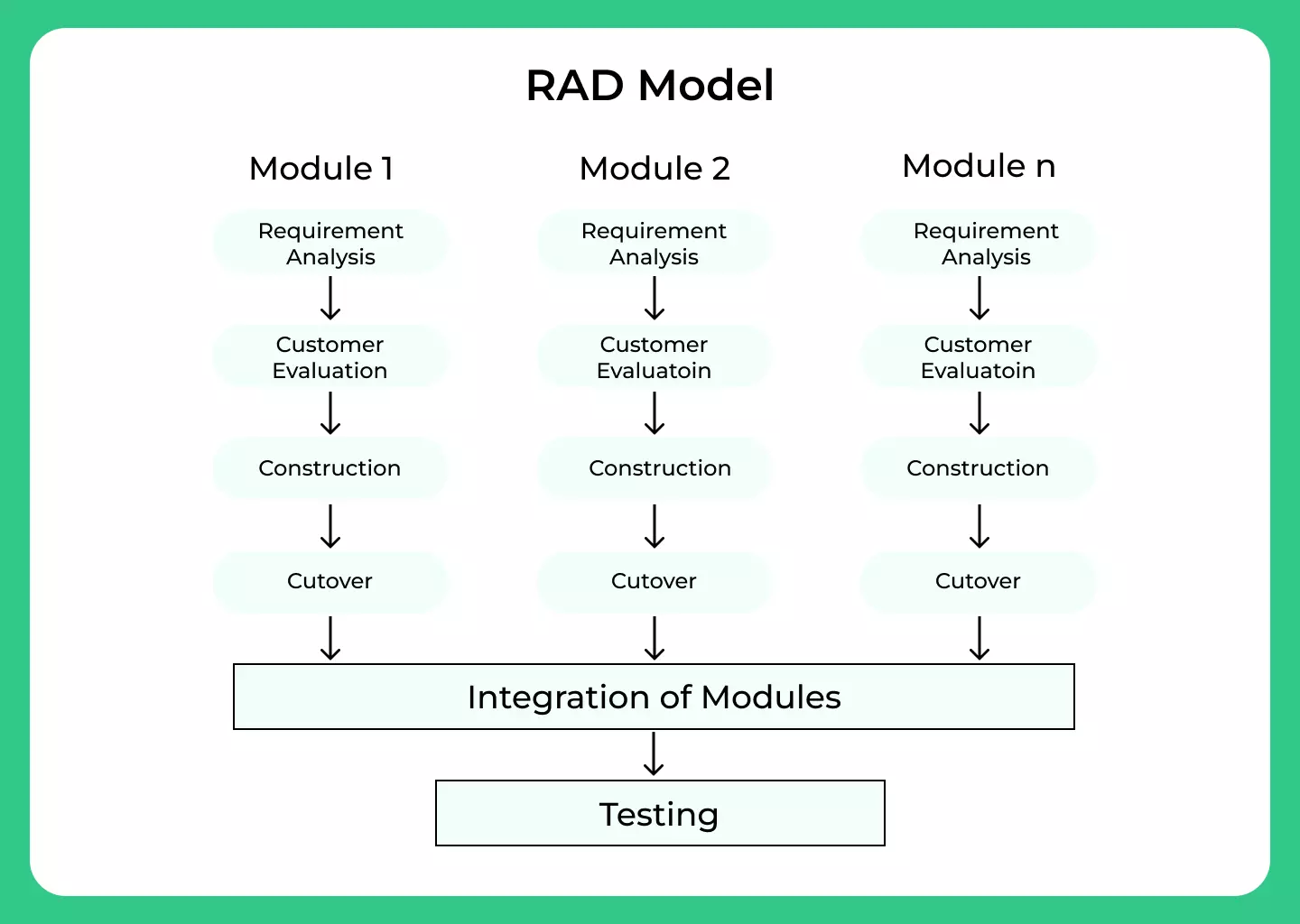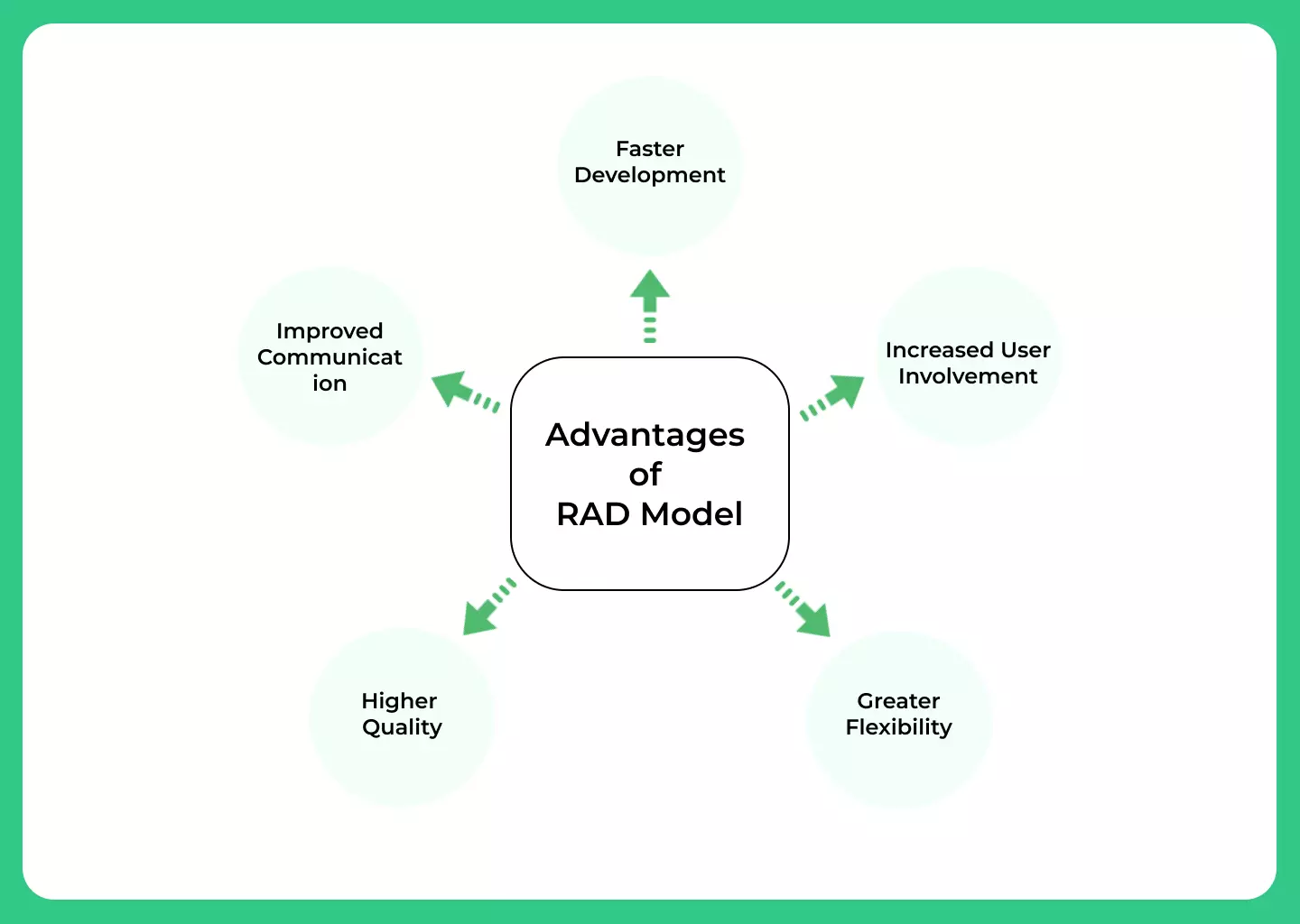0
Notifications Mark All Read
No New notification
- Login
- Get Prime
RAD Model in SDLC
What is RAD Model in SDLC?
The Rapid Application Development (RAD) model is a software development methodology that focuses on rapid prototyping and fast development cycles. It was developed in the 1980s as a response to the traditional Waterfall model, which was seen as too slow and inflexible for some types of software projects.
The RAD model is an iterative and incremental approach that emphasizes rapid prototyping and rapid delivery of a working software product. It involves breaking the development process into smaller, manageable pieces and working on them in parallel.

Processes involved in SDLC Model

The RAD model follows a set of steps that are designed to be completed in an iterative and incremental manner:
Identify the problem or opportunity:
The first step in the RAD process is to identify the problem or opportunity that the software will address. This step involves gathering and analyzing data, conducting market research, and defining the scope of the project.
Define the requirements:
In this step, the project team works with the customer to identify and document the specific requirements for the software. This includes gathering information about the target users, the business goals of the project, and the functional and non-functional requirements of the software.
Build the prototype:
Based on the requirements defined in the previous step, the team builds a functional prototype of the software. This prototype should be a working version of the software that demonstrates the core features and functionality of the final product.
Test and refine the prototype:
Once the prototype has been built, it is tested and refined based on feedback from the customer and end users. This step involves identifying and fixing any issues or bugs that are discovered during testing, and adding or modifying features as needed to improve the user experience.
Deliver the final product:
After the prototype has been tested and refined, the final version of the software is delivered to the customer. This step may involve additional testing and quality assurance processes to ensure that the software is ready for production use.
Advantages of RAD Model in SDLC
The Rapid Application Development (RAD) model is a software development methodology that focuses on rapid prototyping and rapid delivery of working software. Some of the key advantages of the RAD model are:

Faster development:
The focus on rapid prototyping and delivery allows developers to quickly produce working software, reducing the overall time required for development.
Increased user involvement:
The RAD model involves close collaboration with the end-users of the software, which can lead to a better understanding of their needs and requirements, resulting in a more user-friendly product.
Greater flexibility:
The RAD model allows for changes and modifications to be made throughout the development process, making it easier to adapt to changing requirements or priorities.
Higher quality:
The rapid prototyping and iteration process in the RAD model allows developers to identify and fix defects early on in the development process, leading to a higher quality product.
Improved communication:
The close collaboration between developers and end-users in the RAD model can improve communication and facilitate a better understanding of the project goals and requirements.
Customer involvement are needed.
There are no reusable component are used to lead the failure of the project.
This model works only when the requirements are clearly specified.
This model can be more complex if prototype is refined again and again.
RAD model is not suitable for the short projects.
Prime Course Trailer
Related Banners
Get PrepInsta Prime & get Access to all 200+ courses offered by PrepInsta in One Subscription
Get over 200+ course One Subscription
Courses like AI/ML, Cloud Computing, Ethical Hacking, C, C++, Java, Python, DSA (All Languages), Competitive Coding (All Languages), TCS, Infosys, Wipro, Amazon, DBMS, SQL and others

 0
0